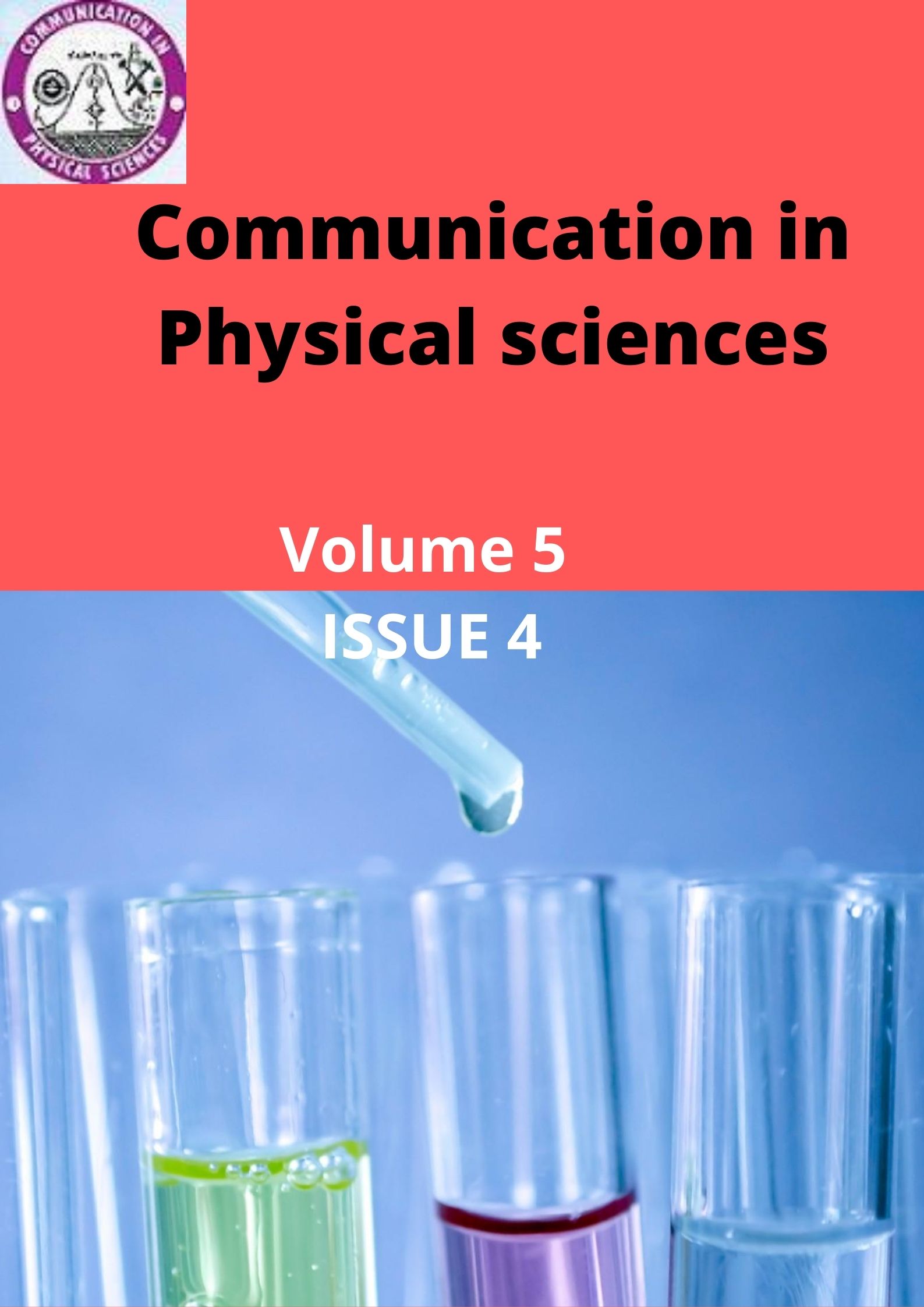Tropospheric Concentrations of Methane Around A Quarry Site in Uturu, Abia State, Nigeria
Keywords:
Quarry site, Uturu, Green house emission, methaneAbstract
Measurement of methane (CH4) concentration in ambient air at Setraco quarry site, Abia State (latitude 05⁰33 N and 06⁰03 N, and longitude 10⁰E and 07⁰29 E) was carried out in this work. The gas was measured using an automatic air sampler (EM-4 Type Multi-P detector). The measurements were made at three sampling points; the engine house, petrol/gas dispense station and crushing site for 12 weeks (7th August – 6th November, 2018) at one (1) hour interval per session for three sessions (morning, afternoon and evening) in a day. The results obtained indicated that concentrations of methane were higher in the quarrying sites than in the control and exhibited highest concentrations of methane in the petrol stations and in the crushing site of the quarry. Therefore, future risk of continuous engagement in the quarrying activities is advocated in this work and it is recommended that continuous monitoring of levels of methane around the quarry should be embarked upon.
Downloads
Published
Issue
Section
Similar Articles
- Iffiok Dominic Uffia, Ofonimeh Emmanuel Udofia, Iniobong Bruno Nsien, Rose Okopide Esen,, Idem Udo Uko, Evaluation of Heavy Metals Ions in Calopogonium mucunoides, Manihot esculenta, Psidium guajava and Mangifera indica Plant Species Within Quarry Site, Akamkpa, Nigeria and Phyto-remediation Potential , Communication In Physical Sciences: Vol. 12 No. 4 (2025): VOLUME1 2 ISSUE 4
- Olumuyiwa O. Akintola , Investigation of the Safe Location for Private Electric Power Generators Servicing Residential Buildings in Nigeria , Communication In Physical Sciences: Vol. 9 No. 4 (2023): VOLUME 9 ISSUE 4
- Ahamefula A. Ahuchaogu, Chukwuemeka T. Adu, Review of Reverse Osmosis as Green Technology against Water Supply: Challenges and the way Forward , Communication In Physical Sciences: Vol. 6 No. 1 (2020): VOLUME 6 ISSUE 1
- Uzo Anekwe, Assessment of Background Ionizing Radiation and Radiological Health Risks in Federal Government Girls’ College, Imiringi, Nigeria , Communication In Physical Sciences: Vol. 11 No. 2 (2024): VOLUME 11 ISSUE 2
- Ola-Buraimo Abdulrazaq Olatunji. , Umar Hamida, Geochemical Properties of Kalambaina Formation: Implication on Limestone and Marlstone Qualities for Industrial Uses, Sokoto Basin, Nigeria , Communication In Physical Sciences: Vol. 11 No. 4 (2024): VOLUME 11 ISSUE 4
- Ola-Buraimo Abdulrazaq Olatunji, Umar Hamida, Geochemical Properties of Kalambaina Formation: Implication on Limestone and Marlstone Qualities for Industrial Uses, Sokoto Basin, Nigeria , Communication In Physical Sciences: Vol. 11 No. 4 (2024): VOLUME 11 ISSUE 4
- Ayomiposi Sodeinde, Oluwafemi Orekoya, Daniel Jayeoba, Oyebade Adepegba, Effect of Green Information and Communication Technology on Survival of Electricity Distribution Companies in Nigeria , Communication In Physical Sciences: Vol. 12 No. 3 (2025): VOLUME 12 ISSUE 3
- Nnaemeka Emeka Ogbene, Hyacinth Chibueze Inyiama, Frank Ekene Ozioko, Nnamdi Johnson Ezeora, Agbo Chibuike George, Asogwa Tochukwu Chijindu, Application of Green Computing at Nigerian Tertiary Institutions , Communication In Physical Sciences: Vol. 8 No. 4 (2022): VOLUME 8 ISSUE 4
- Bright Adinchezo Adimoha , James Nwawuike Nnadi, Bright Okore Osu, Franca Amaka Nwafor, A Mixed Boundary Value Problem for a Finite Isotropic Wedge Under Antiplane Deformation , Communication In Physical Sciences: Vol. 11 No. 4 (2024): VOLUME 11 ISSUE 4
- Patricia Adamma Ekwumemgbo, Gideon Adamu Shallangwa, Idongesit Edem Okon, Ibe Awodi, Green Synthesis and Characterization of Iron Oxide Nanoparticles using Prosopis Africana Leaf Extract , Communication In Physical Sciences: Vol. 9 No. 2 (2023): VOLUME 9 ISSUE 2
You may also start an advanced similarity search for this article.




